Water conservation has become increasingly important, especially in regions facing drought conditions. For gardeners in dry, space-limited areas, finding efficient ways to water plants is crucial for growing fresh food sustainably. Traditional irrigation timers and modern smart watering systems both offer solutions, but they differ significantly in features, costs, and water-saving capabilities. This comprehensive comparison will help you determine which option best suits your gardening needs while maximizing water efficiency.
Understanding Irrigation Timers
Irrigation timers have been the backbone of automated watering systems for decades. These devices allow gardeners to schedule regular watering sessions without manual intervention. Understanding how they work and their best applications can help you determine if they’re the right choice for your garden.
How Traditional Irrigation Timers Work
Traditional irrigation timers operate on a straightforward principle: they turn water flow on and off according to pre-programmed schedules. Most models feature a simple interface with dials or buttons that allow you to set specific watering days and durations. Once programmed, these timers consistently follow the same schedule regardless of weather conditions or seasonal changes.
Advantages of Irrigation Timers
- More affordable upfront cost (typically $30-$100)
- Simple installation with minimal technical knowledge required
- Straightforward programming interface
- No internet connection needed
- Reliable performance in areas with poor connectivity
Limitations of Irrigation Timers
- Static watering schedules regardless of weather conditions
- No automatic adjustments for seasonal changes
- Potential for overwatering during rainy periods
- Limited programming options for complex gardens
- Manual adjustments required throughout the year
Best Use Cases for Irrigation Timers
Traditional irrigation timers excel in specific gardening scenarios where simplicity and reliability take precedence over advanced features. Consider a basic timer if your garden fits these situations:
Ideal Scenarios for Traditional Irrigation Timers
- Small balcony or patio gardens with consistent watering needs
- Regions with predictable rainfall patterns
- Budget-conscious gardening projects
- Areas with limited or unreliable internet connectivity
- Gardeners who prefer simple, mechanical solutions
For many small-scale vertical gardens, a basic irrigation timer connected to a drip system can provide adequate watering while conserving more water than manual methods. These systems are particularly effective when combined with water-efficient delivery methods like soaker hoses or drip emitters.
Exploring Smart Watering Systems
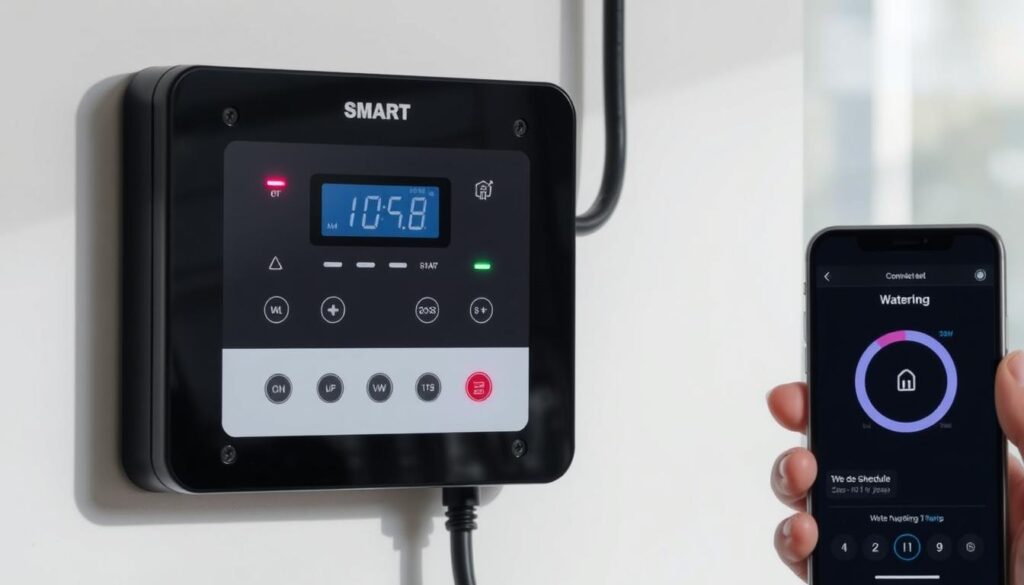
Smart watering systems represent the technological evolution of irrigation control. These internet-connected devices integrate weather data, soil conditions, and advanced programming to optimize water usage. Understanding their capabilities can help you determine if the additional investment makes sense for your gardening needs.
Features of Smart Watering Systems
Smart irrigation controllers go beyond simple scheduling by incorporating real-time data and adaptive algorithms to make intelligent watering decisions. Most systems include a central controller unit that connects to your home’s WiFi network and communicates with various components of your irrigation system.
Key Smart Watering Features
- Weather integration: Automatically adjusts watering based on local weather forecasts
- Smartphone control: Manage your irrigation system from anywhere via dedicated apps
- Zone customization: Create tailored watering schedules for different garden areas
- Soil moisture sensing: Optional sensors that measure actual soil conditions
- Water usage reports: Track consumption and identify opportunities for conservation
- Smart home integration: Works with Amazon Alexa, Google Home, and other platforms
The most significant advantage of smart systems is their ability to adapt watering schedules based on real-time conditions. For example, if rain is forecast, the system will automatically skip scheduled watering. Similarly, during hot spells, it might increase watering duration to compensate for increased evaporation.
Ideal Scenarios for Smart Watering Systems
Smart irrigation controllers shine in specific gardening contexts where water conservation and precise control are priorities. Consider investing in a smart system if your garden matches these scenarios:
Environmental Conditions
- Drought-prone regions with water restrictions
- Areas with unpredictable weather patterns
- Gardens with varied plant types requiring different watering needs
- Locations with high water costs
Gardener Preferences
- Tech-savvy gardeners comfortable with apps
- Those who travel frequently and need remote control
- Gardeners focused on maximizing water efficiency
- People managing larger or complex garden layouts
Ready to Maximize Your Garden’s Water Efficiency?
Assess your garden’s specific needs to determine which irrigation solution will provide the best balance of convenience and water conservation.
Side-by-Side Comparison: Irrigation Timers vs Smart Watering Systems
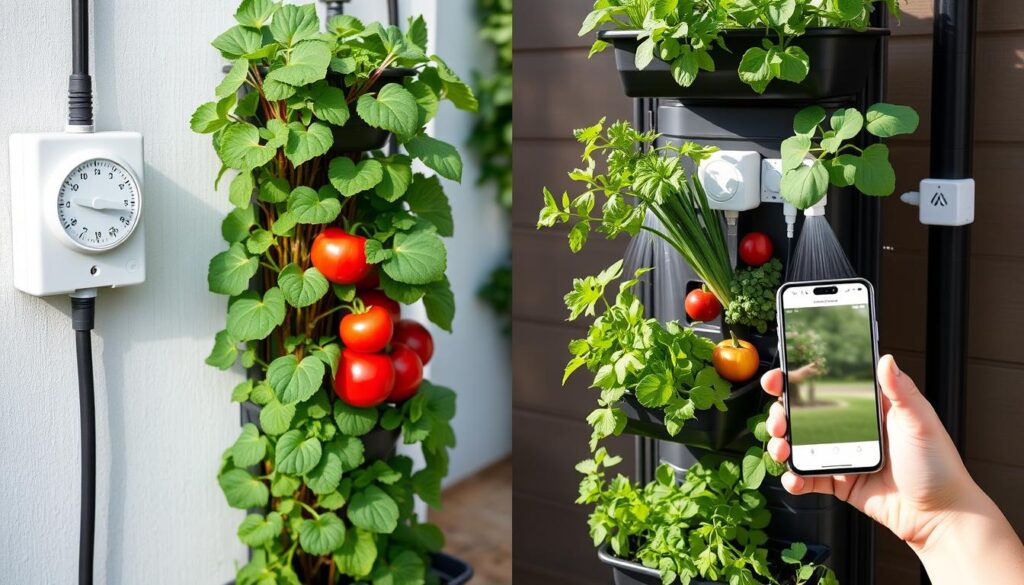
To help you make an informed decision, let’s compare traditional irrigation timers and smart watering systems across several key factors. This comparison highlights the strengths and limitations of each approach to garden irrigation.
| Feature | Traditional Irrigation Timers | Smart Watering Systems |
| Initial Cost | $30-$100 | $150-$300+ |
| Installation Complexity | Simple, DIY-friendly | Moderate, may require WiFi setup |
| Weather Adaptation | None (unless with rain sensor) | Automatic based on forecasts |
| Remote Control | No | Yes, via smartphone app |
| Programming Options | Basic schedules | Advanced zone control, custom programs |
| Water Savings | 10-15% over manual watering | 30-50% over traditional timers |
| Maintenance | Minimal, battery replacement | Occasional software updates, WiFi maintenance |
| Longevity | 5-10 years | 3-7 years (technology may become outdated) |
Cost, Installation, and Maintenance
The financial aspects of irrigation systems extend beyond the initial purchase price. When evaluating the total cost of ownership, consider these factors:
Upfront Costs
Traditional timers are significantly less expensive initially, with most models priced between $30 and $100. Smart controllers typically start around $150 and can exceed $300 for models with additional features or zone capacity. Some smart systems may also require additional components like soil moisture sensors or weather stations, further increasing the initial investment.
Long-Term Savings
While smart systems cost more upfront, they can generate substantial savings over time. Studies show that smart irrigation controllers can reduce water consumption by 30-50% compared to traditional timers. In regions with high water costs or tiered pricing structures, these savings can help the system pay for itself within 1-2 years of installation.
Water Efficiency and Environmental Impact
Water conservation is often the primary motivation for upgrading irrigation systems. The environmental benefits of efficient watering extend beyond just saving water:
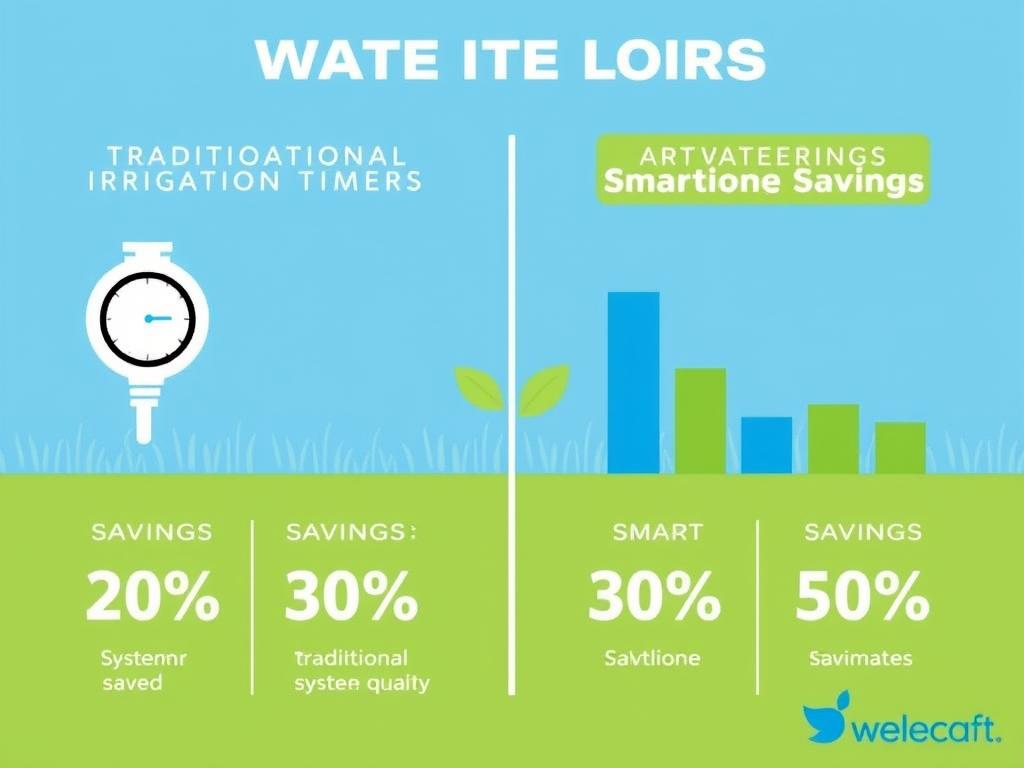
Environmental Benefits of Smart Irrigation
- Reduced water waste: Smart systems can save up to 8,800 gallons of water annually for a typical garden
- Lower energy consumption: Less water pumped means reduced energy use for municipal water systems
- Healthier plants: Optimal watering reduces plant stress and disease susceptibility
- Reduced runoff: Precise watering minimizes excess that can carry fertilizers into waterways
- Compliance with restrictions: Easier adherence to local watering regulations during drought conditions
For vertical gardens in particular, water efficiency is crucial as these systems often have limited soil volume and can dry out quickly. Smart systems can detect these conditions and adjust watering accordingly, preventing both under and overwatering scenarios that can damage plants.
Practical Tips for Implementation
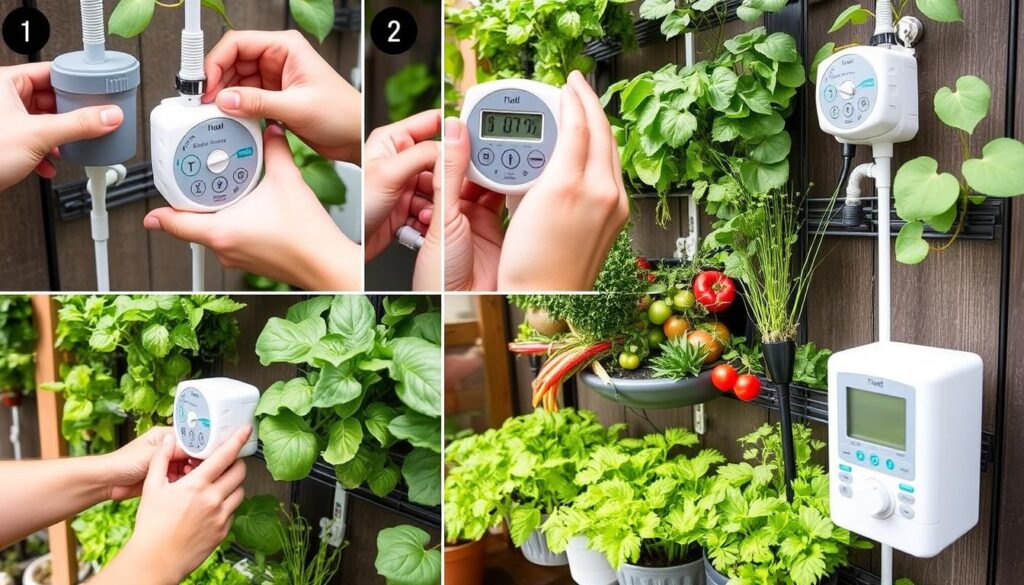
Step-by-Step Guide to Installing an Irrigation Timer
Installing a basic irrigation timer is a straightforward DIY project that most gardeners can complete in under an hour. Follow these steps for a successful installation:
Installation Steps
- Gather supplies: Timer unit, batteries (if required), Teflon tape, and basic tools
- Turn off water supply at the main valve or spigot
- Apply Teflon tape to the threads of your spigot or pipe connection
- Attach the timer by screwing it onto the water source
- Connect your garden hose or irrigation tubing to the output side of the timer
- Install batteries following manufacturer instructions
- Turn water supply back on and check for leaks
- Program your watering schedule according to your garden’s needs
- Test the system by running a manual cycle
Safety Tip
When installing outdoor electronic devices, always ensure connections are protected from the elements. Use weatherproof boxes or covers for any exposed wiring, and position the timer where it won’t be submerged during heavy rain.
Integrating Smart Systems with Vertical Gardens
Vertical gardens present unique irrigation challenges due to their vertical orientation and often limited soil volume. Smart watering systems can be particularly effective for these setups when properly configured:
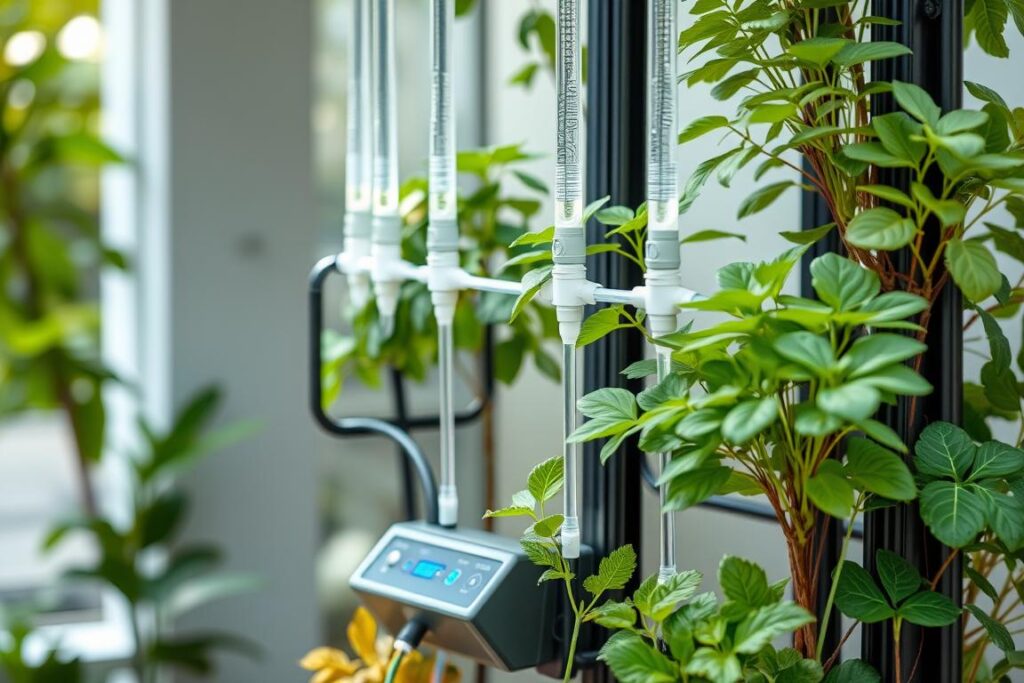
Recommended Components
- Pressure-compensating drip emitters: Ensure even water distribution regardless of height
- Multiple zones: Create separate zones for different plant types or sun exposures
- Moisture sensors: Place at different heights to monitor varying conditions
- Flow meter: Detect leaks quickly to prevent water waste
Configuration Tips
- Shorter, more frequent cycles: Prevent runoff in vertical systems
- Morning watering: Schedule irrigation early to reduce evaporation
- Seasonal adjustments: Let smart features adapt to changing conditions
- Zone staggering: Water different zones sequentially for optimal pressure
For vertical gardens using soil-less systems like hydroponics, specialized smart controllers can monitor nutrient levels and pH in addition to managing water delivery. These advanced systems are particularly valuable for intensive food production in limited spaces.
Can I convert my existing irrigation timer to a smart system?
Yes, there are several “bridge” devices that can connect to your existing timer and add smart functionality. These devices, such as the Orbit B-hyve Smart Hose Watering Timer, connect between your water source and traditional timer, allowing app control and weather-based adjustments without replacing your entire system.
Do smart watering systems work during internet outages?
Most quality smart controllers will continue to operate during internet outages by following the last saved schedule. However, they won’t be able to receive weather updates or remote commands until connectivity is restored. Some models also include manual controls for direct programming during outages.
How often should I update my watering schedule?
With traditional timers, you should adjust your schedule at least seasonally (spring, summer, fall, winter) to account for changing weather patterns. Smart systems handle these adjustments automatically, though you may want to review their performance quarterly to ensure they’re operating as expected.
Popular Smart Watering System Options
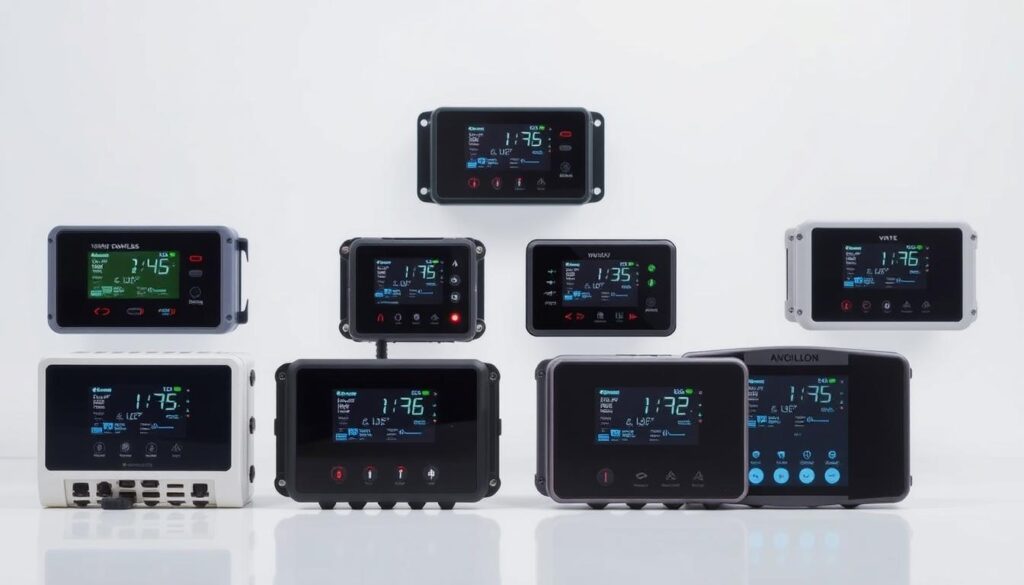
The market offers several excellent smart irrigation controllers that can significantly improve your garden’s water efficiency. While we don’t endorse specific brands, these systems consistently receive positive reviews from gardeners and water conservation experts:
Entry-Level Smart Controllers
These affordable options provide basic smart functionality like weather adjustments and app control without breaking the budget. They typically support 4-8 zones and offer essential features for small to medium gardens.
- Price range: $80-$150
- Weather data integration
- Basic smartphone app control
- Limited zone customization
Mid-Range Smart Controllers
These systems balance cost and functionality with more robust features. They typically support 8-16 zones and offer more detailed customization options for diverse garden needs.
- Price range: $150-$250
- Advanced weather integration
- Detailed water usage reports
- Multiple programming options
- Smart home integration
Premium Smart Controllers
These high-end systems offer the most comprehensive features for large or complex gardens. They typically support 16+ zones and provide extensive customization and monitoring capabilities.
- Price range: $250-$350+
- Expandable zone capacity
- Advanced soil moisture sensing
- Flow monitoring for leak detection
- Professional-grade programming
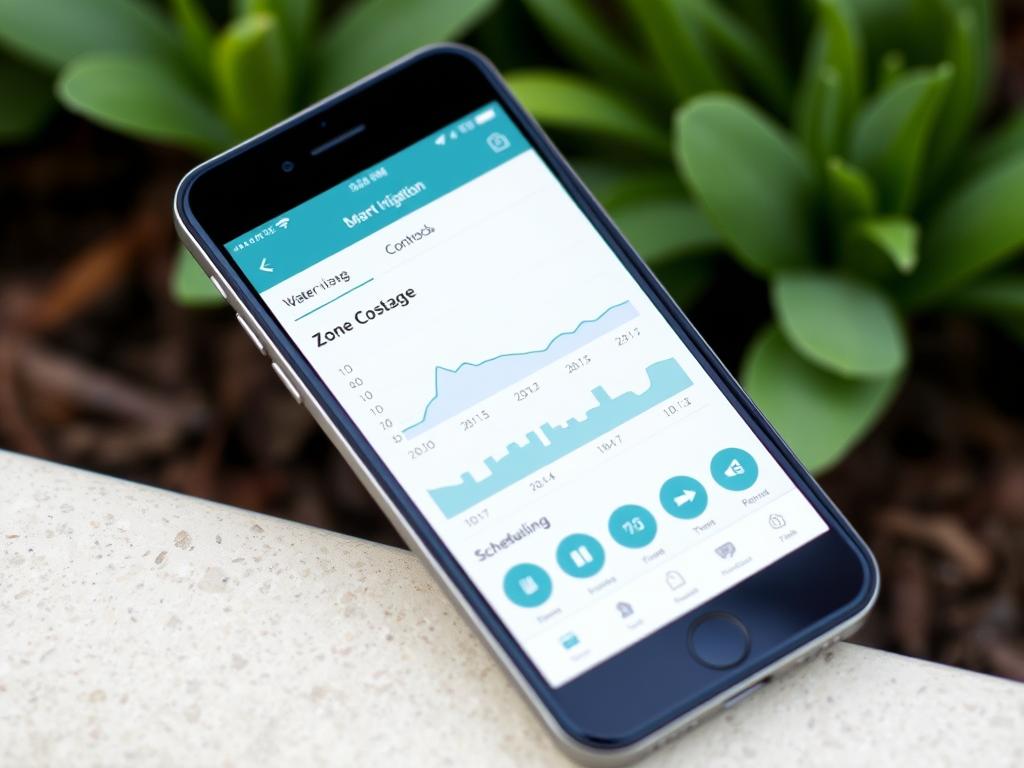
When selecting a smart irrigation controller, prioritize systems that use robust weather data from multiple sources rather than just a single weather station. The quality of weather data significantly impacts the controller’s ability to make appropriate watering adjustments.
Assessing Your Garden’s Irrigation Needs
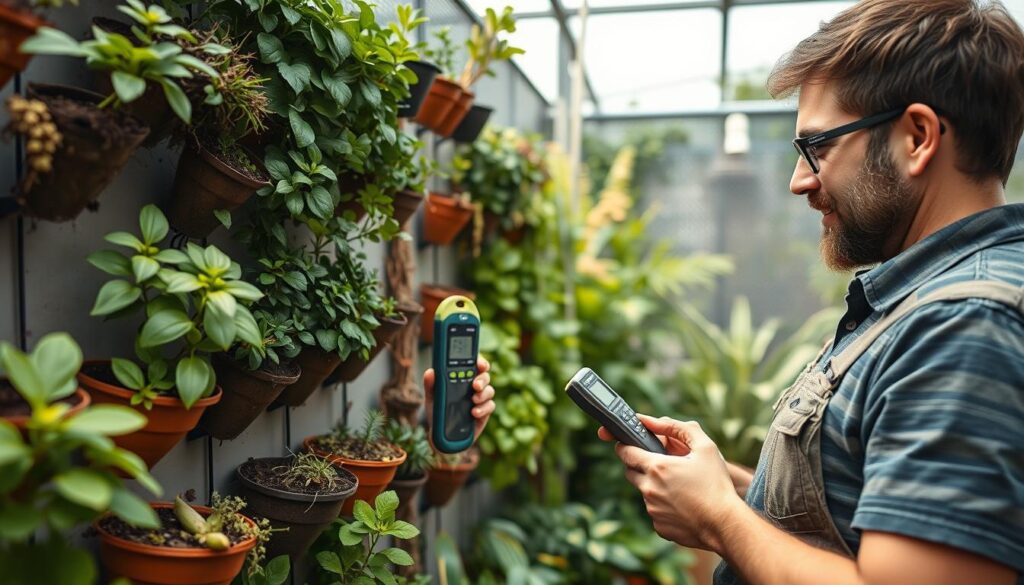
Before investing in either a traditional timer or smart watering system, take time to assess your garden’s specific irrigation requirements. This evaluation will help you select the most appropriate solution for your unique situation.
Garden Assessment Checklist
- Garden size and layout: Measure your garden area and identify distinct planting zones
- Plant water requirements: Group plants with similar watering needs together
- Local climate: Consider rainfall patterns, temperature ranges, and seasonal variations
- Water restrictions: Check local regulations regarding outdoor water usage
- Budget constraints: Determine your initial investment capacity and long-term savings goals
- Technical comfort: Assess your willingness to work with apps and smart technology
Making the Right Choice for Your Garden
Based on your assessment, you can determine which irrigation solution aligns best with your needs. Consider these scenarios:
Choose a Traditional Timer If:
- You have a small garden with uniform watering needs
- Your budget is limited
- Your area has consistent, predictable weather
- You prefer simple mechanical devices
- You have unreliable internet connectivity
Choose a Smart System If:
- You have diverse plants with varying water requirements
- Water conservation is a high priority
- Your area has water restrictions or high water costs
- You travel frequently and need remote control
- You enjoy using technology to optimize gardening
“The best irrigation system isn’t necessarily the most advanced or the most basic—it’s the one that meets your specific gardening needs while conserving water and supporting plant health.”
Remember that either system will be more water-efficient than manual watering, especially when paired with water-saving delivery methods like drip irrigation or soaker hoses. The key is selecting a solution that you’ll use consistently and correctly.
Conclusion: Making Water-Efficient Gardening a Reality
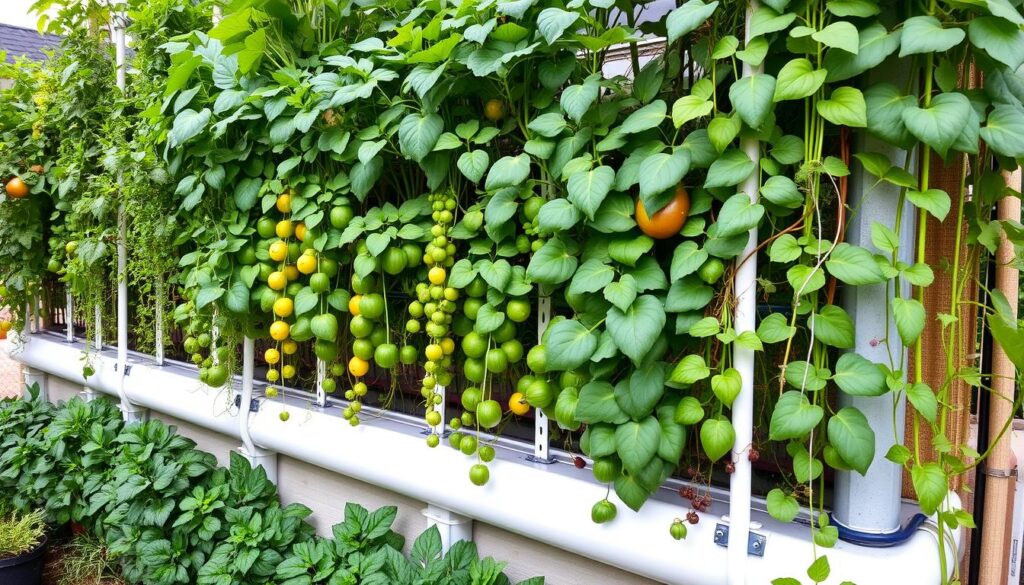
Both traditional irrigation timers and smart watering systems offer significant advantages over manual watering, helping you create a more water-efficient garden while saving time and effort. Your choice between these options should be guided by your specific gardening context, technical preferences, and water conservation goals.
Traditional timers provide a simple, affordable entry point into automated watering, making them ideal for small gardens with straightforward needs. Their reliability and ease of use make them accessible to all gardeners, regardless of technical expertise.
Smart watering systems represent the cutting edge of irrigation technology, offering substantial water savings through weather-responsive adjustments and precise zone control. While they require a larger initial investment, they can pay for themselves through reduced water bills and healthier plants.
Whichever system you choose, combining it with water-efficient delivery methods like drip irrigation will maximize conservation benefits. Regular maintenance and seasonal reviews of your watering schedule will ensure continued efficiency as your garden evolves.
Start Your Water-Efficient Garden Journey Today
Take the first step toward a more sustainable garden by assessing your needs and exploring the irrigation options that best suit your space.
By investing in appropriate irrigation technology, you’re not just creating a more convenient gardening experience—you’re contributing to broader water conservation efforts while growing healthy, productive plants in your vertical garden.
Will is a vertical gardening enthusiast and sustainable cultivation specialist with a passion for helping people grow fresh food in small spaces and dry climates. With years of hands-on experience testing smart irrigation systems, optimizing urban gardens, and exploring eco-friendly solutions, this author shares clear, practical tips to turn any corner into a productive garden. Whether on a sunny balcony or in a compact backyard, Will helps readers save water, maximize space, and enjoy healthy harvests year-round. When not tending to his plants, you’ll find him sipping herbal tea and sketching ideas for new sustainable projects.

